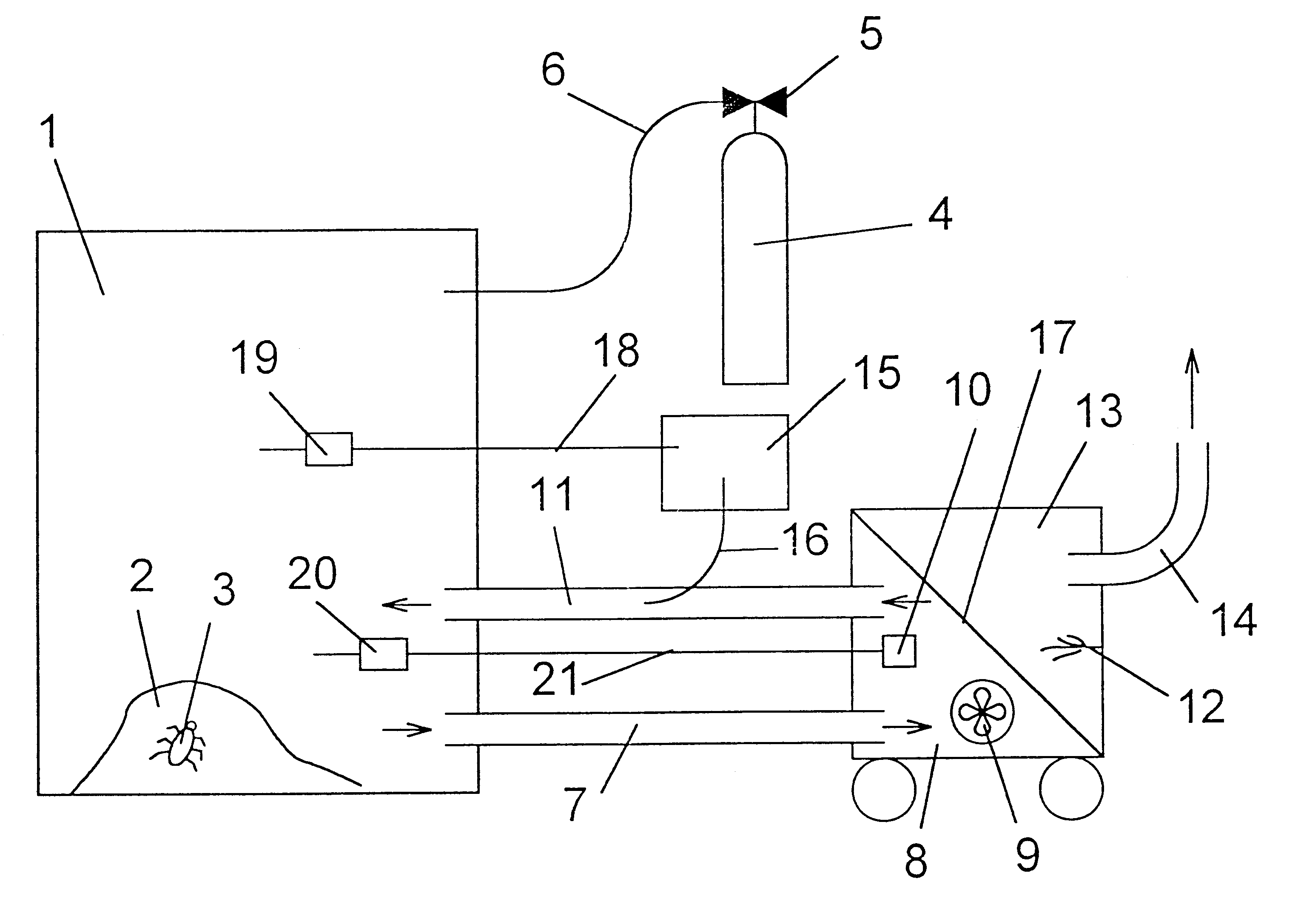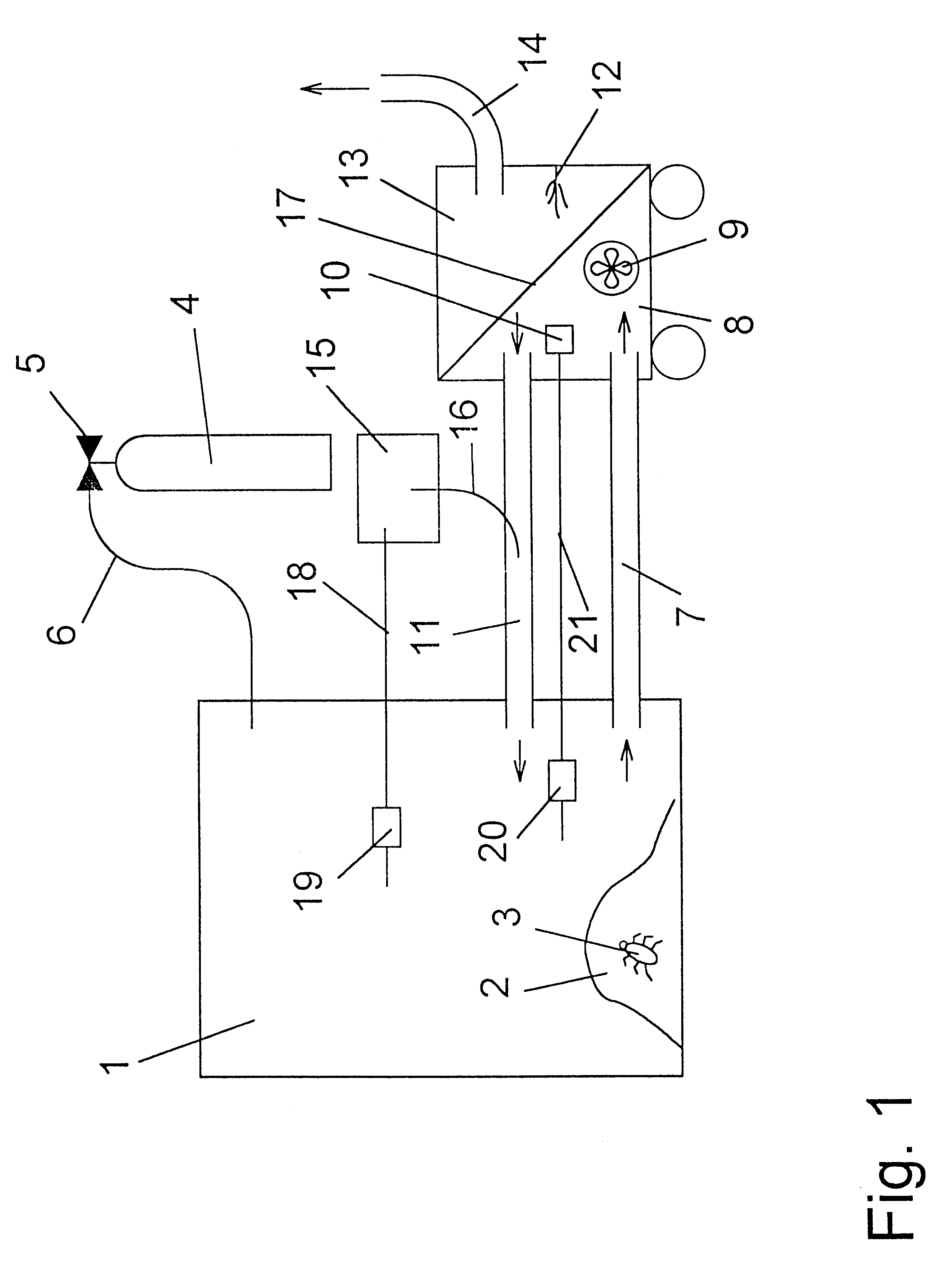Thermal pest control
a technology of pest control and thermal insulation, applied in the direction of lavatory sanitory, fumigators, chemicals, etc., can solve the problems of inability or too expensive to wrap buildings in tent foils, inability to use food processing plants, and inability to use process
- Summary
- Abstract
- Description
- Claims
- Application Information
AI Technical Summary
Benefits of technology
Problems solved by technology
Method used
Image
Examples
example 2
A hulling mill is infested with flat grain beetle as well as Plodia interpunctella and Ephestia kuehniella. All openings, doors and large cracks in the wall of the mill are sealed in a gas-tight manner. Processing machines containing milling residues, which are likewise infested with, e.g., moth eggs, are accommodated in the attic of the mill. These machines also must be subjected to the pest control.
The attic of the mill already has a temperature of about 32.degree. C. due to exposure to sunlight, but only a temperature of 16.degree. C. can be measured on the first floor.
Test insects in cages are introduced in various areas of the mill. The cages also contain insect brood. Hot air is introduced into the hulling mill by means of a heater according to FIG. 1 via the heat exchanger with separate flue gas routing. A target temperature of about 25.degree. C. is sought to be reached in the mill. This temperature is reached in as little as 4 hours. All wall surfaces, objects, machines, wo...
example 3
A flour mill is infested by flour beetle and Ephestia elutella (a moth species). The mill is sealed in a sufficiently gas-tight manner and hot air is then introduced into the mill by means of a heater according to FIG. 1 at a starting temperature of 18.degree. C. The temperature in the mill is increased to 30.degree. C., doing so at a heat-up rate of 4.degree. C. per hour. Stresses on the furnishings and machines of the mill are avoided as a result. When a temperature of 30.degree. C. has been reached, this temperature is maintained at a constant value for about 1 hour and sulfuryl fluoride is then introduced into the mill from a storage tank. The sulfuryl fluoride concentration is maintained at a constant value of 35 g / cbm, the heater having been switched off already shortly before the introduction of the sulfuryl fluoride. The temperature in the mill drops to the initial temperature within 48 hours and the mill is then ventilated. All pests are dead, and no reinfestation can be se...
PUM
 Login to View More
Login to View More Abstract
Description
Claims
Application Information
 Login to View More
Login to View More - Generate Ideas
- Intellectual Property
- Life Sciences
- Materials
- Tech Scout
- Unparalleled Data Quality
- Higher Quality Content
- 60% Fewer Hallucinations
Browse by: Latest US Patents, China's latest patents, Technical Efficacy Thesaurus, Application Domain, Technology Topic, Popular Technical Reports.
© 2025 PatSnap. All rights reserved.Legal|Privacy policy|Modern Slavery Act Transparency Statement|Sitemap|About US| Contact US: help@patsnap.com


